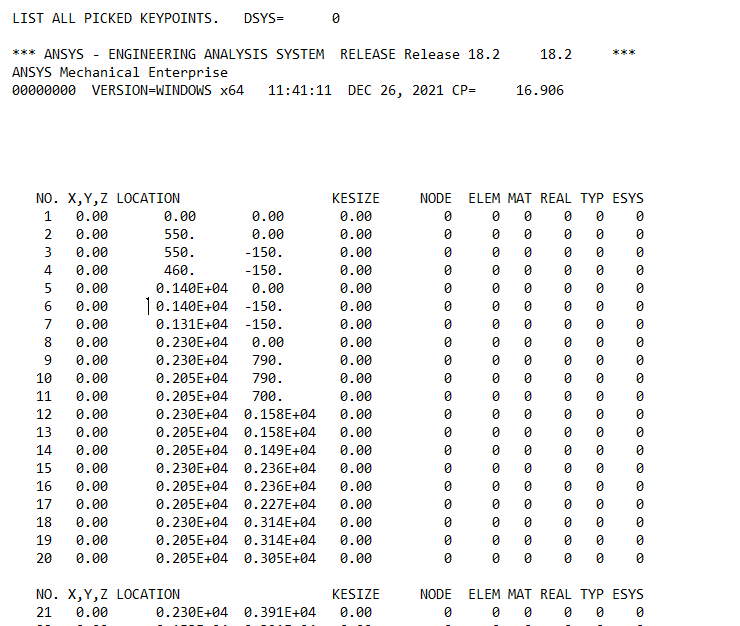TAGGED: ansys-apdl, importdata, keypopints, modeling
-
-
December 26, 2021 at 10:57 am
KIMJJ
SubscriberHello.
does anyone know how can I import some key points to ANSYS APDL?
I have some key points in the text file from modeling but there are a lot and I can't manually add them. is there any way to add them to ANSYS APDL?
please see the attached photo.
December 28, 2021 at 3:36 pmdanielshaw
Ansys EmployeeIt appears that you are already in MAPDL. Do you want to transfer the keypoints to another MAPDL model? If so, you could use CDWRITE to write the solid model information to an .ANF file and then use CDREAD to read that information into a new MAPDL session. You could also use *VWRITE to write the locations to an external file and then *VREAD to read them into a new MAPDL session, but the CDB file approach is probably simpler.
Viewing 1 reply thread- The topic ‘How to import key points from a text file to ANSYS APDL’ is closed to new replies.
Ansys Innovation SpaceTrending discussions- The legend values are not changing.
- LPBF Simulation of dissimilar materials in ANSYS mechanical (Thermal Transient)
- Convergence error in modal analysis
- How to model a bimodular material in Mechanical
- APDL, memory, solid
- Meaning of the error
- Simulate a fan on the end of shaft
- Nonlinear load cases combinations
- Real Life Example of a non-symmetric eigenvalue problem
- How can the results of Pressures and Motions for all elements be obtained?
Top Contributors-
3892
-
1414
-
1241
-
1118
-
1015
Top Rated Tags© 2025 Copyright ANSYS, Inc. All rights reserved.
Ansys does not support the usage of unauthorized Ansys software. Please visit www.ansys.com to obtain an official distribution.
-
The Ansys Learning Forum is a public forum. You are prohibited from providing (i) information that is confidential to You, your employer, or any third party, (ii) Personal Data or individually identifiable health information, (iii) any information that is U.S. Government Classified, Controlled Unclassified Information, International Traffic in Arms Regulators (ITAR) or Export Administration Regulators (EAR) controlled or otherwise have been determined by the United States Government or by a foreign government to require protection against unauthorized disclosure for reasons of national security, or (iv) topics or information restricted by the People's Republic of China data protection and privacy laws.












